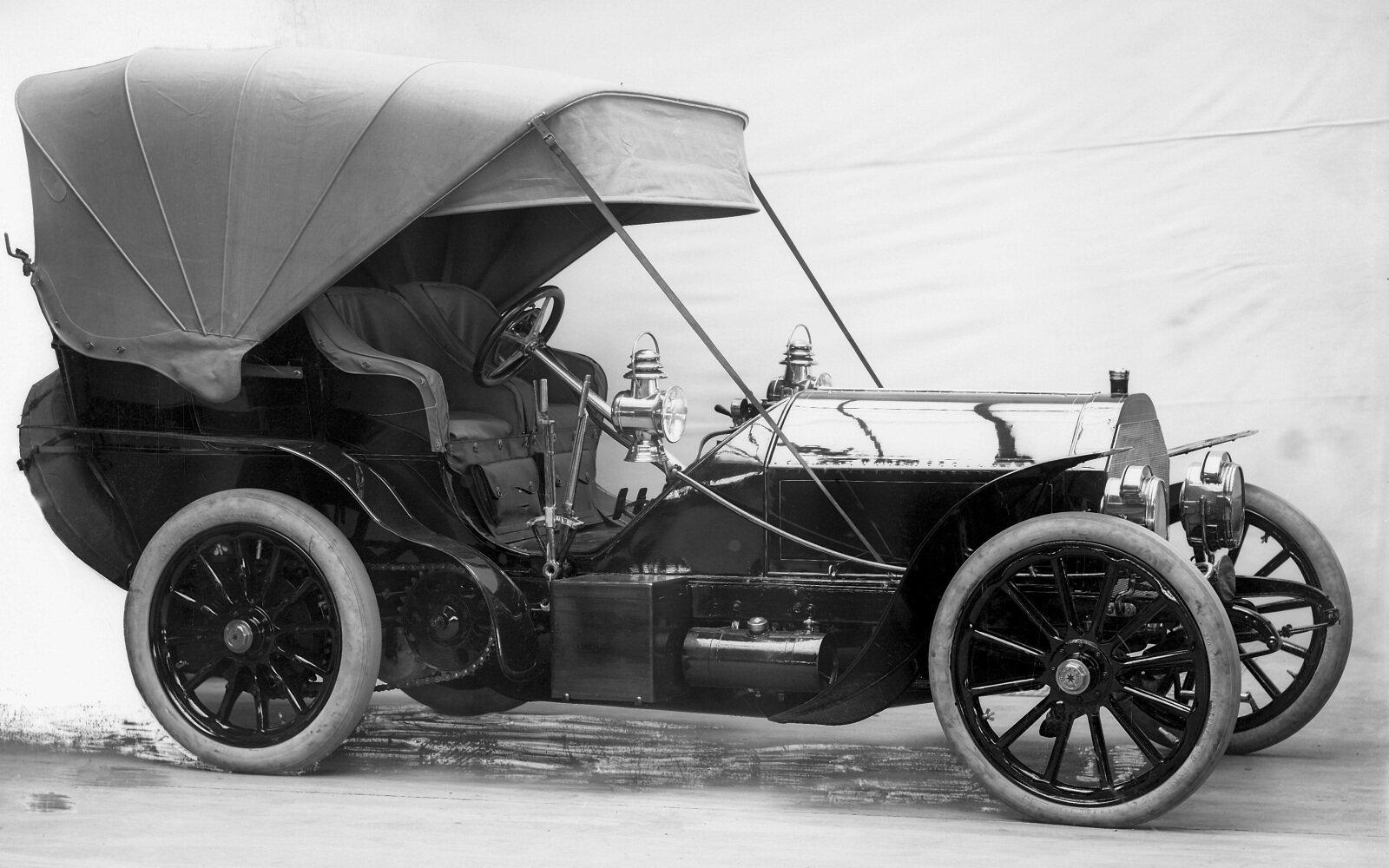1903 Mercedes-Benz Simplex 60HP

The descriptions of the Classic Cars in the Directory were partly generated or supplemented with the help of artificial intelligence (AI). The content may occasionally not always be entirely accurate or factually correct despite careful checking.
The Mercedes-Benz Simplex 60HP of 1903 was one of the earliest automobiles produced by the German automaker. This vehicle was considered to be a pioneer of the modern automobile industry, thanks to the innovative technical features that it incorporated at the time. Despite being more than a century old, the Simplex 60HP was a true engineering masterpiece that boasted some of the most advanced technologies of its time.
One of the most notable technical aspects of the Simplex 60HP was its engine. It featured a massive four-cylinder powertrain that generated 60 horsepower, which was considered a significant amount of power during that era. The engine was equipped with a camshaft that was driven by two pairs of bevel gears and a crankshaft that featured four spoked balance weights. Additionally, the engine came equipped with a magnificent cooling system that used tubes, fins, and a large cast-iron radiator that allowed the engine to remain cool during long drives.
The Simplex 60HP's engine was mated to a four-speed transmission that boasted a durable cast-iron case that doubled as a water-cooling jacket. This transmission also had a cone clutch that offered a smooth and progressive engagement of the gears. Another notable technical feature of the Simplex 60HP was its suspension system. It had a rigid front axle that was suspended on semi-elliptical springs while the rear axle utilized a three-quarter floating axle arrangement that was also suspended on springs.
The Simplex 60HP also had a unique drive system that featured a two-piece propeller shaft that was connected to the engine via a sliding gearbox. The drive system featured a double-jointed sleeve that connected the gearbox to the drive shaft, which in turn was linked to the differential via a universal joint. This arrangement allowed the engine to be mounted low and at the center of the vehicle's frame, which gave the Simplex 60HP an outstanding center of gravity and handling characteristics.
One of the most remarkable features of the Simplex 60HP was its body design. The vehicle had a classic British touring car-style body that was constructed from lightweight materials such as aluminum and sheet steel. The body was mounted on a sturdy steel frame that was reinforced with solid braces, making the Simplex 60HP incredibly durable and reliable. Additionally, the vehicle had large wooden wheels that were wrapped in high-quality pneumatic tires.
In conclusion, the Mercedes-Benz Simplex 60HP of 1903 was a stunning example of automotive engineering in its time. Its massive powertrain, advanced transmission, innovative drive system, and robust suspension made it a unique vehicle that set standards for the industry. Additionally, its classic British-style touring car design made it one of the most stylish and sophisticated automobiles of its era. Despite its age, the Simplex 60HP remains a significant technical achievement that showcases the exceptional engineering talents of the Mercedes-Benz brand.
Milestones
- The Mercedes-Benz Simplex 60HP was introduced at the Paris Motor Show in 1902. - Production began in 1903 at the factory in Cannstatt, Germany. - The car was powered by a 5.9-liter four-cylinder engine, producing 60 horsepower. - It featured a leather-clad wooden body and a chain drive system. - The Simplex 60HP won numerous races, including the Gordon Bennett Cup in 1903 and 1904. - In 1906, the Simplex 60HP was redesigned with a larger engine and a more powerful 60-80 horsepower output. - The car remained in production until 1910, when it was replaced by newer models such as the Mercedes 28/60 PS Simplex.Technical
- Engine type: M181 single-cylinder four-stroke engine - Engine displacement: 1,533 cc - Maximum engine power: 60 horsepower at 1,000 rpm - Maximum engine torque: 200 Nm at 750 rpm - Transmission: Chain-driven four-speed manual gearbox - Suspension: Semi-elliptical leaf springs on rigid axles, with friction dampers - Brakes: Mechanical drum brakes on rear wheels only - Wheels and tires: 26-inch wire-spoked wheels with 835 mm tires - Top speed: 80 km/h (50 mph) - Fuel consumption: 18-20 liters per 100 kilometers (12-13 mpg) - Fuel tank capacity: 40 liters (10.6 US gallons) - Dimensions: 3,700 mm (length) x 1,400 mm (width) x 1,810 mm (height) - Weight: 950 kg (2,094 lb) - Body style: 2-seater open touring car with rear tonneau cover - Production years: 1902-1909 - Original price: 9,000 Deutsche Mark (equivalent to around $45,000 in today's money)



